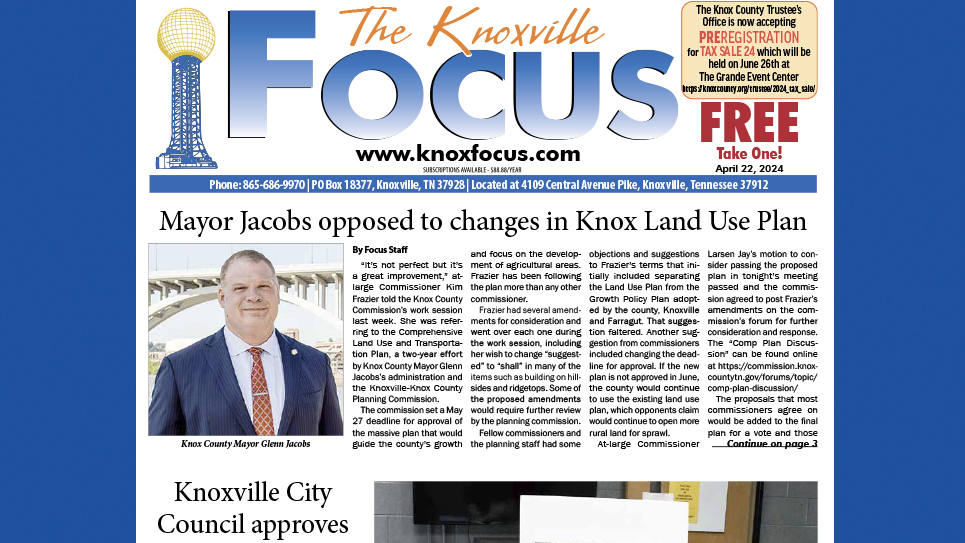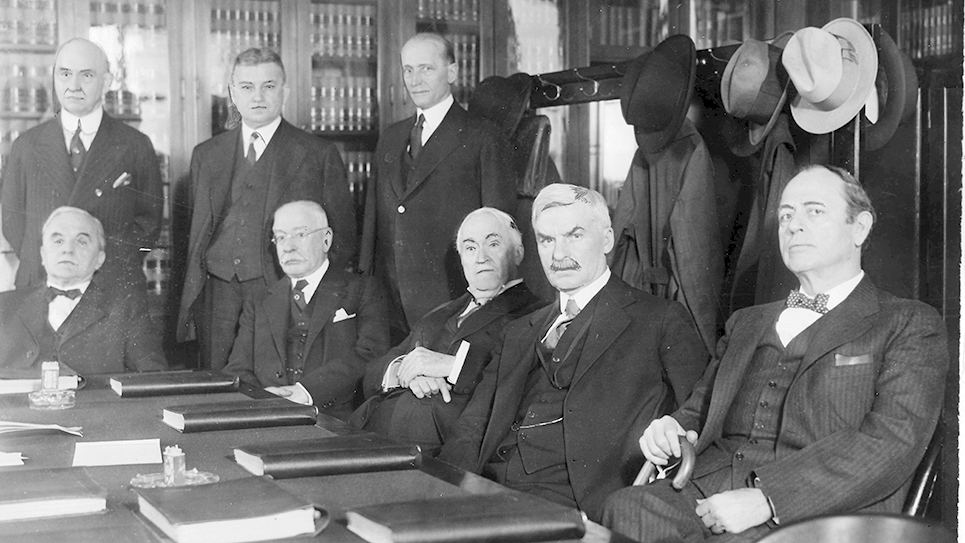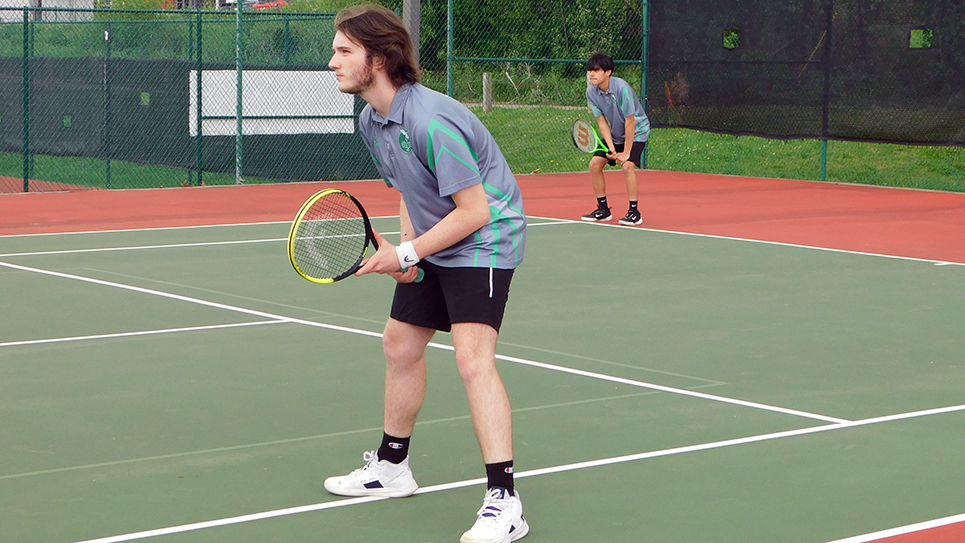Except during medical school, I’ve lived in Knoxville all my life. I love my hometown which is not too big or too small and, of course, we have the Vols! However, a common complaint of city life is traffic. And Knoxville’s traffic situation has become insane.
We live in the UT Hospital area and, aside from the Pellissippi parkway and the South Knoxville bridge, we traverse Alcoa highway to get most places. Under the best of circumstances, Alcoa highway traffic is a challenge, but with the much needed and seemingly endless repair work the roadway has become harrowing. And the next phase may be the most challenging because it will necessitate removing the rock wall opposite Looney Island in the Tennessee River channel. We have confidence in the construction engineers. We just hope the design works.
I think Alcoa highway is Knoxville’s NASCAR. People in Blount County are on their way to Knox County and Knoxvillians are headed towards Maryville, and you best not get in their way. Recently, I was having some repair work done on my truck at West Chevrolet on the Motor Mile. As I waited in the turn lane behind another car, a third car whipped in front of us, and the driver, while talking on her cell phone, made a one-handed U-turn in heavy traffic! Totally insane! It all happened so fast I couldn’t get her license plate. I considered following her to make a Gomer Pyle style, “Citizen’s arrest! Citizen’s arrest!”
When you are in traffic logic dictates that you should pay attention and drive defensively. Unfortunately, this is not often the case. A former church member used to read the newspaper while driving! And when I lived in Memphis during my internal medicine residency, the newspaper reported a story of a motorcyclist struck crossing an intersection while eating a bowl of spaghetti.
I am a small government guy, but I believe the hands-free cell phone law, taking effect July 1, 2019, is necessary to protect citizens from highway idiots who don’t use their God-given intellect – and because Elon Musk’s driverless cars are not ready for primetime.
Perhaps if we had a Divine traffic designer we would not have our infamous Malfunction Junction. Actually, we have a Divine traffic designer and a wondrous transportation structure. It’s called the cardiovascular system. There are 60,000 miles of blood vessels in the human body. Compare this to 47,000 miles of interstate highways in the United States. Obviously, this vascular network carries blood pumped by the heart rather than cars.
Imagine a dump truck with a full load of oxygen and nutrients coursing down ever smaller arteries and finally reaching the tiny capillaries. There, oxygen and nutrients are unloaded and carbon dioxide and wastes are gathered on the venous side of the capillary mesh. Capillary venules coalesce into larger and larger veins until reaching the lungs where CO2 is exchanged for another load of oxygen. All the while nutrients are added to the circulation from the gut and liver.
We take for granted that things work. This is especially true when we are young and consider ourselves immortal, indestructible and bullet proof. Perhaps I should use the personal pronoun having survived my early years as a teenage boy. Actually, a teenage boy has only half a brain and two teenage boys have only half a brain between them. It is an observational truth that in groups of teenage boys the common sense fraction decreases as the denominator increases.
Recently, the daughter of my patient suffered a stroke at age thirty-eight. When the distraught father called me for advice, I knew this was not the usual stroke syndrome as seen in octogenarians where “rust in old pipes” (fatty plaque) is the usual culprit. A stroke in a younger person raises the specter of inflammation of the arteries known as vasculitis, as seen in lupus or a disorder of coagulation. However, she had no symptoms of any of these and so I wondered about a “hole in her heart.”
In the uterus the developing child receives oxygen and nutrients from the mother’s placenta. Since the baby’s lungs are not used in the water environment of the uterus, oxygenated blood moves from the right side of the child’s heart to the left side through a passageway known as the atria secundum. Oxygenated blood also moves through the ductus arteriosus to the developing child’s aorta. By the third trimester, the communication between the upper chambers of the child’s heart is being readied for closure which is accomplished when the baby is born and begins to breathe. Likewise, the ductus arteriosus normally closes down at birth or shortly thereafter. Sometimes the ductus arteriosus vessel fails to close and fortunately this can be treated with a simple NSAID (indomethacin) to aid in the closure of a PDA or patent ductus arteriosus.
The daughter’s stroke was due to a PFO, patent foramen ovale, a residual hole between upper atrial chambers of the heart. This allowed a blood clot to pass through the opening of the upper chambers and enter the arterial circulation to cause her stroke.
Interestingly, PFO is not an uncommon anomaly, occurring in 25% of adults. Most of the time the hole is small, unrecognized and does not cause problems. When a large hole is discovered or a stroke occurs, the abnormal communication needs to be closed. In the past this was accomplished with open heart surgery, but nowadays the defect can often be closed with the insertion of an endovascular “patch” to close the hole between the two atrial chambers.
We live in the information age with heavy traffic. However, if you want more regarding PFO or PDA, I can recommend free websites such as the Mayo Clinic and Wikipedia for these topics.
Understandably, you should be wary of information sources and even the search engine that you use. My principal medical resource is UpToDate, which has become the standard for physicians. However, it costs $500 a year!
I no longer use Google as a search engine because of all the problems associated with this company. My search engine of choice is DuckDuckGo, which does not track my searches or monetize the information like Google.
Food for thought…






